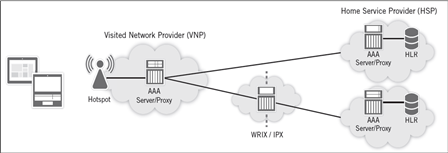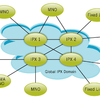
Right now, LTE is in its heyday. Carriers are doing all they can to expand coverage and improve speeds, and those lucky enough to be using it probably experience great service. But as mobile data use increases, that honeymoon period will end as networks get clogged and overloaded.
As that happens, WiFi networks will become an increasingly important way for carriers to improve coverage and capacity. This is opening new opportunities not only for pure-play WiFi providers, but also for mobile network operators (MNOs) implementing complementary WiFi networks as a means to expand coverage, decrease the cost per delivered bit and ease congestion on strained spectrum and backhaul resources.
Roaming, the process by which customers can use the network of a “visited” network operator to access services in their home network, is becoming an important point for mobile carriers that want to give customers the best quality of service possible. Operators also want to better monetize their network investments through roaming agreements with other wireless operators and MNOs, thereby creating opportunities for WiFi roaming hub operators that can provide value by enabling multilateral connectivity between multiple WiFi network operators.
Roaming onto WiFi is an important part of the mobile data offload strategies that can help operators cost effectively increase coverage maps and provide users with a positive experience. As standards and technology evolve, operators are employing various approaches to provide their customers with a seamless experience as they move between mobile networks and WiFi hotspots.
The Wireless Broadband Alliance (WBA) has established roaming guidelines to provide its member operators a reference for facilitating roaming. Since these guidelines make roaming easier, the benefits to WiFi operators include more opportunities to monetize network investments through increased traffic and improved user experience. As for implementation, there are a couple of broad architectural options WiFi operators have when it comes to interconnecting with other networks to enable roaming. One is for WiFi operators to connect directly with other operators and establish bilateral agreements to enable customers to roam, but these agreements typically do not scale or provide ubiquitous coverage. Alternatively, operators can use the services of a third-party hubbing provider, like an IPX, that has established a Wireless Roaming Intermediary eXchange (WRIX), a framework created by the WBA to facilitate roaming across different WiFi technology implementations.
The WRIX is broken into three levels that cover the various inter-operator interactions needed to support roaming. I will cover that, as well as roaming in 3G and LTE networks, in my next blog. Stay tuned.
To share your feedback or thoughts on roaming with me, let’s talk on Twitter at @JMachiDialogic.













